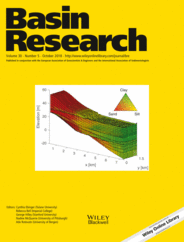
Full text loading...
We used detrital zircon U/Pb geochronology and apatite (U–Th–Sm)/He thermochronology to better constrain depositional ages and sedimentation rates for the Pliocene Productive Series in Azerbaijan. U/Pb analysis of 1,379 detrital zircon grains and (U–Th–Sm)/He analysis of 57 apatite grains—from Kirmaky Valley and Yasamal Valley onshore sections, Absheron Peninsula—yielded two distinct sub‐populations: “young” Neogene grains and “old” Mesozoic, Palaeozoic and Proterozoic/Archean grains. The large numbers of Neogene age grains (around 10% of all grain ages) provided a new absolute age constraint on the maximum depositional age of the Lower Productive Series of 4.0 Myr. These “young” Neogene zircon grains most likely originated from volcanic ash falls sourced from the Lesser Caucasus or Talesh Mountains. In this paper we propose a timescale scenario using the maximum depositional age of the Productive Series from detrital zircon grain U/Pb constraints. Potential consequences and limitations of using apatite (U–Th–Sm)/He dating method in estimating maximum depositional ages are also discussed. These new age constraints for the Lower Productive Series gave much faster sedimentation rates than previously estimated: 1.3 km/Myr in the South Caspian Basin margin outcrops and up to 3.9 km/Myr in the basin centre. The sedimentation rates are one of the highest in comparison to other sedimentary basins and coeval to global increase in sedimentation rates 2–4 Myr. The older group of detrital zircon grains constitutes the majority of grains in all sample sets (~80%). These older ages are inferred to reflect the provenance of the Productive Series sediment. This sediment is interpreted to have been derived from the Proterozoic and Archean crystalline basement rocks and Phanerozoic cover of the East European Craton, Proterozoic/Palaeozoic rocks of the Ural Mountains and Mesozoic sedimentary rocks of the Greater Caucasus. This sediment was likely supplied from northerly sourced drainage that emptied into the South Caspian Basin.

Article metrics loading...

Full text loading...
References


Data & Media loading...
Supplements

